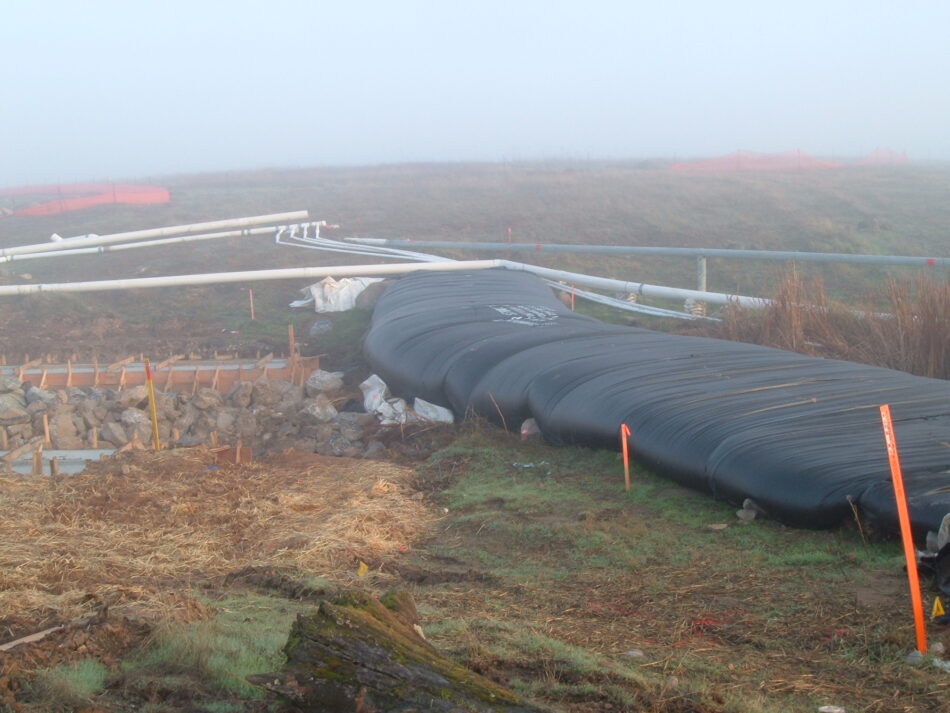
1.) A double open end (DOE) AquaDam was used at the upstream end of Markham Ravine. A DOE AquaDam needs an elevated bank for each of its open ends.
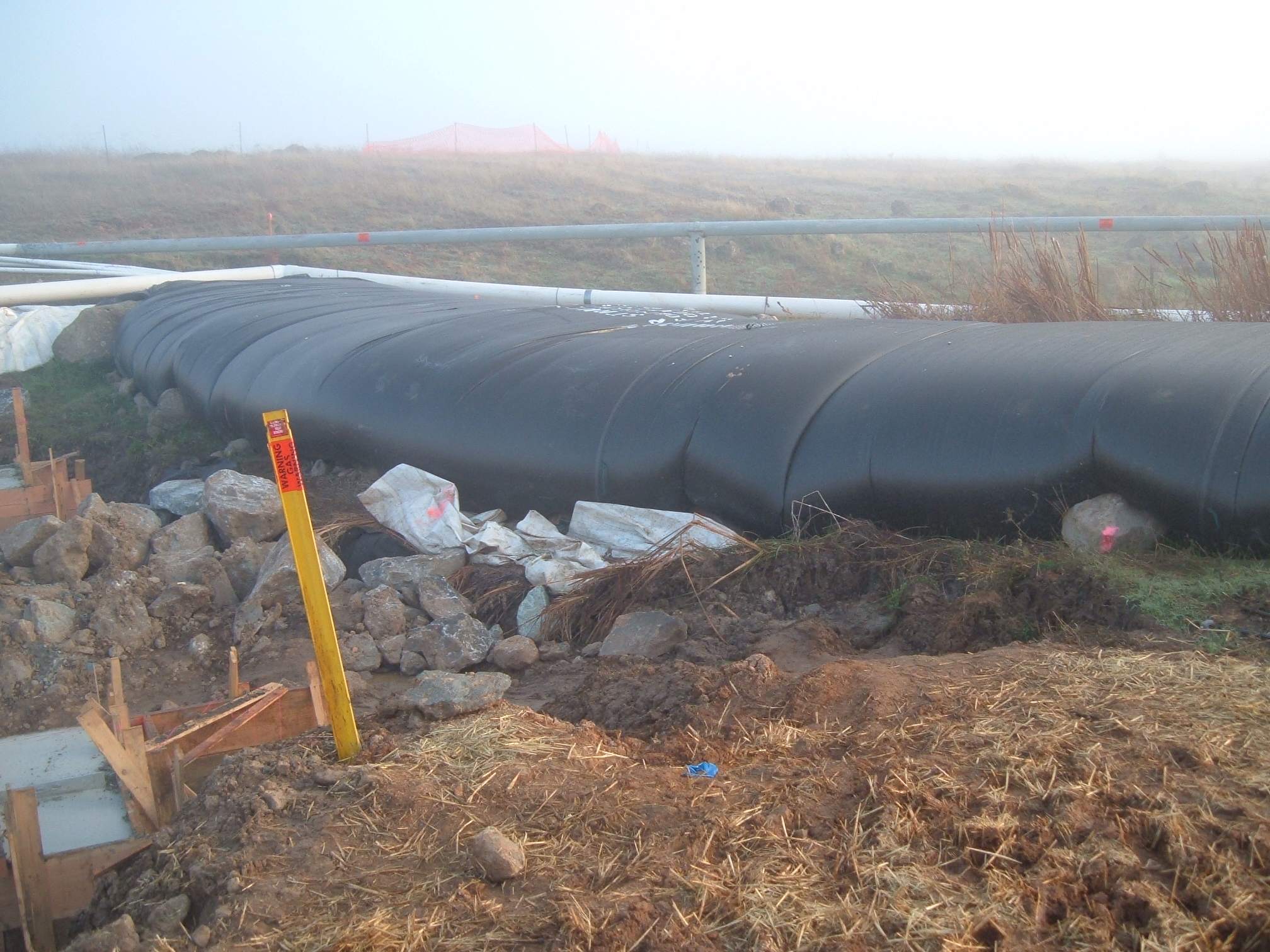
2.) Workers were able to construct the main channel for water to travel through after the bridge is built, while the DOE AquaDam held back the ravine water.

3.) Lots of wood, concrete, steel, and aggregate were used for the construction of this bridge.
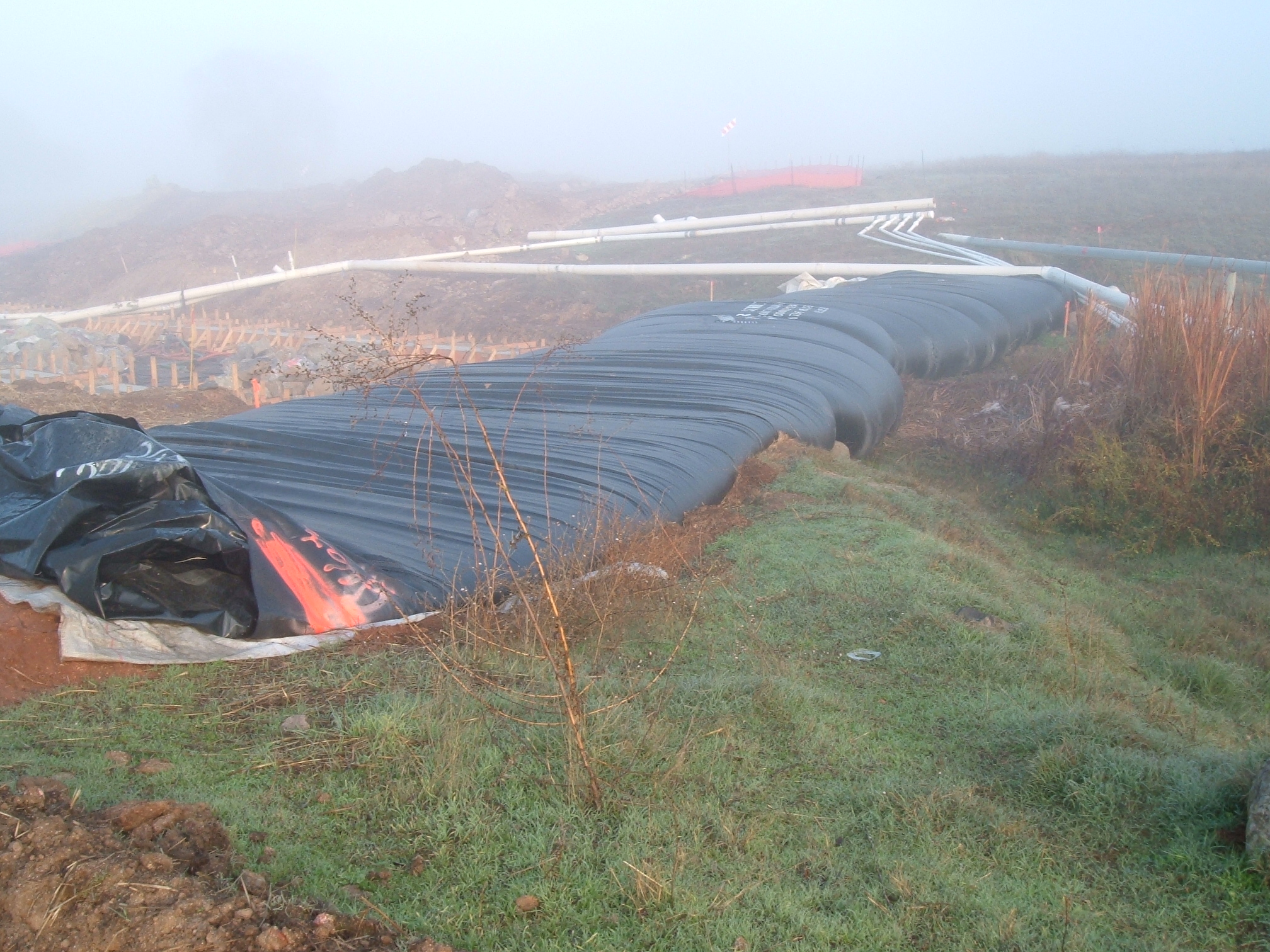
4.) The open ends and fill-tubes of a DOE AquaDam must be elevated higher than the full height of dam along its given path. An AquaDam will only reach its full height at the lowest elevation along its given path. When full, the top of an AquaDam will be relatively level and the bottom lays on the contours of the ground creating a seal.
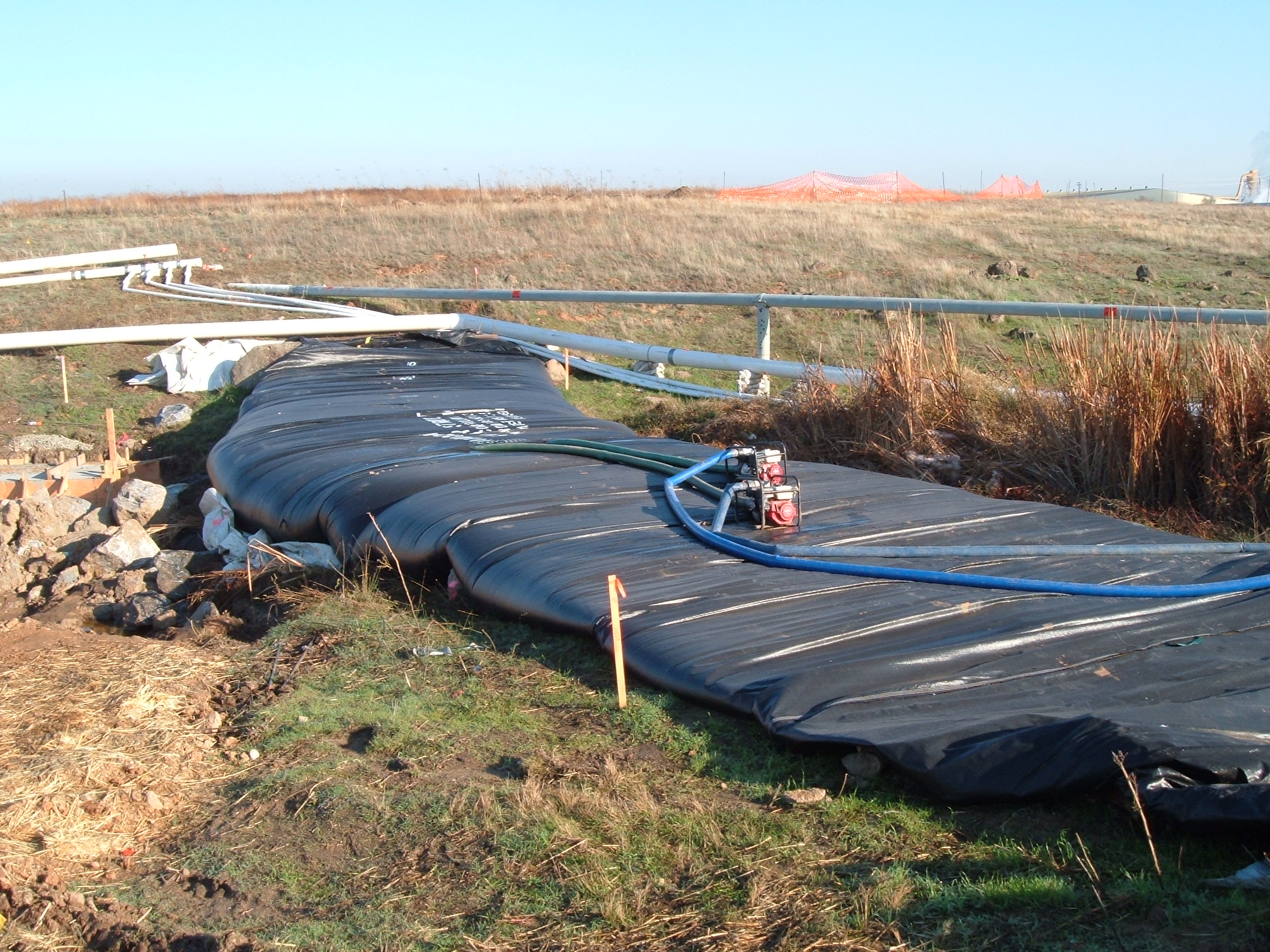
5.) For this project the water inside of the AquaDam needed to be pumped to a designated location. Typically, the water inside an AquaDam comes from and goes back into the surrounding body of water it is in. Workers could have placed the suctions hoses into the fill-tubes, pumped down the AquaDam, and then laid the fill-tubes down into the water. In this case the water was not allowed to be emptied back into the water course downstream.
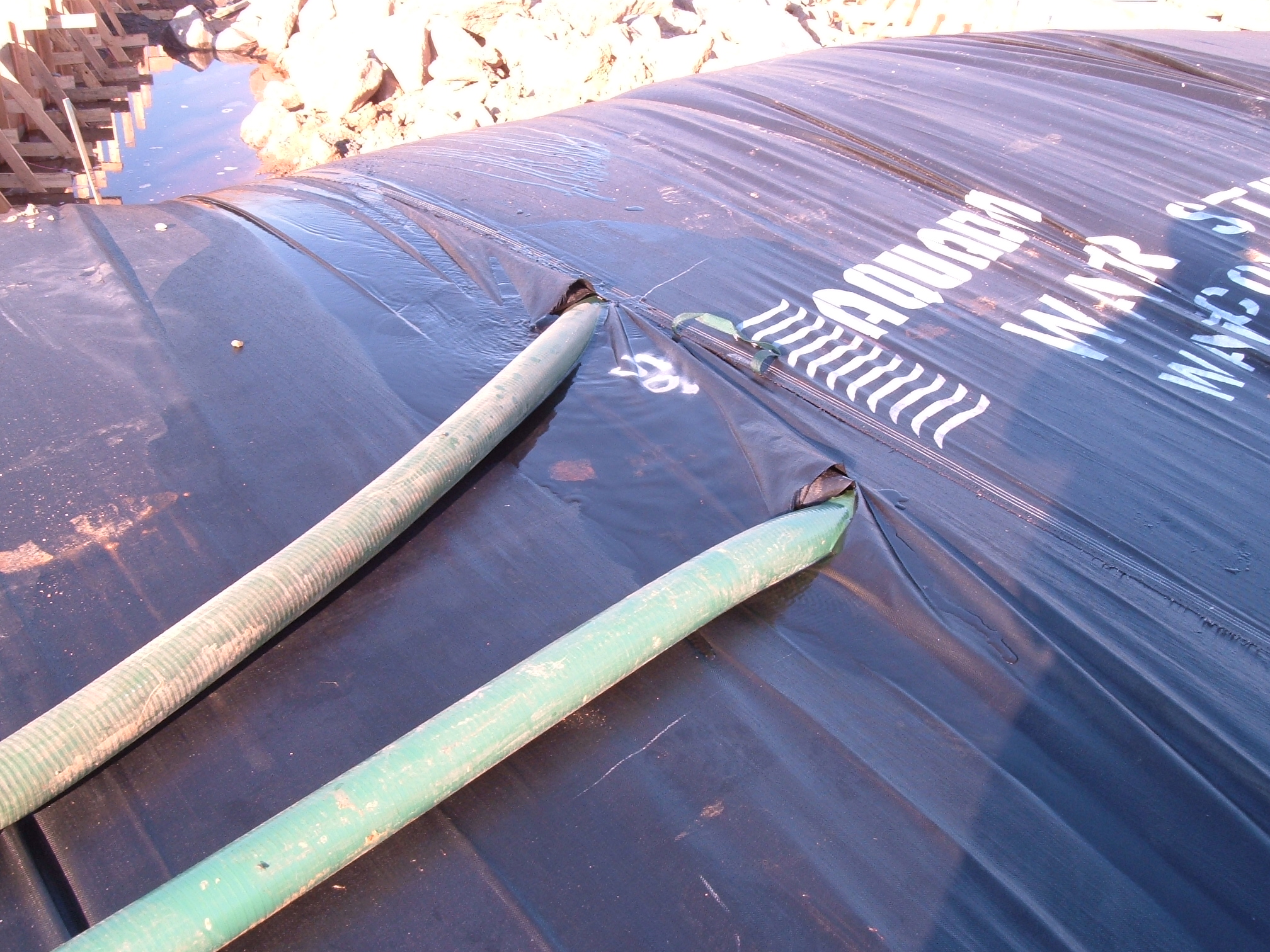
6.) Holes were cut into the top of the AquaDam, where the AquaDam was the tallest, and suction hoses were placed into the holes. Workers were sure not have any sharp and/or abrasive edges on the suction hose ends that were inserted into the dam. The holes were only cut large enough for the 3-inch hoses to fit in, through each layer.
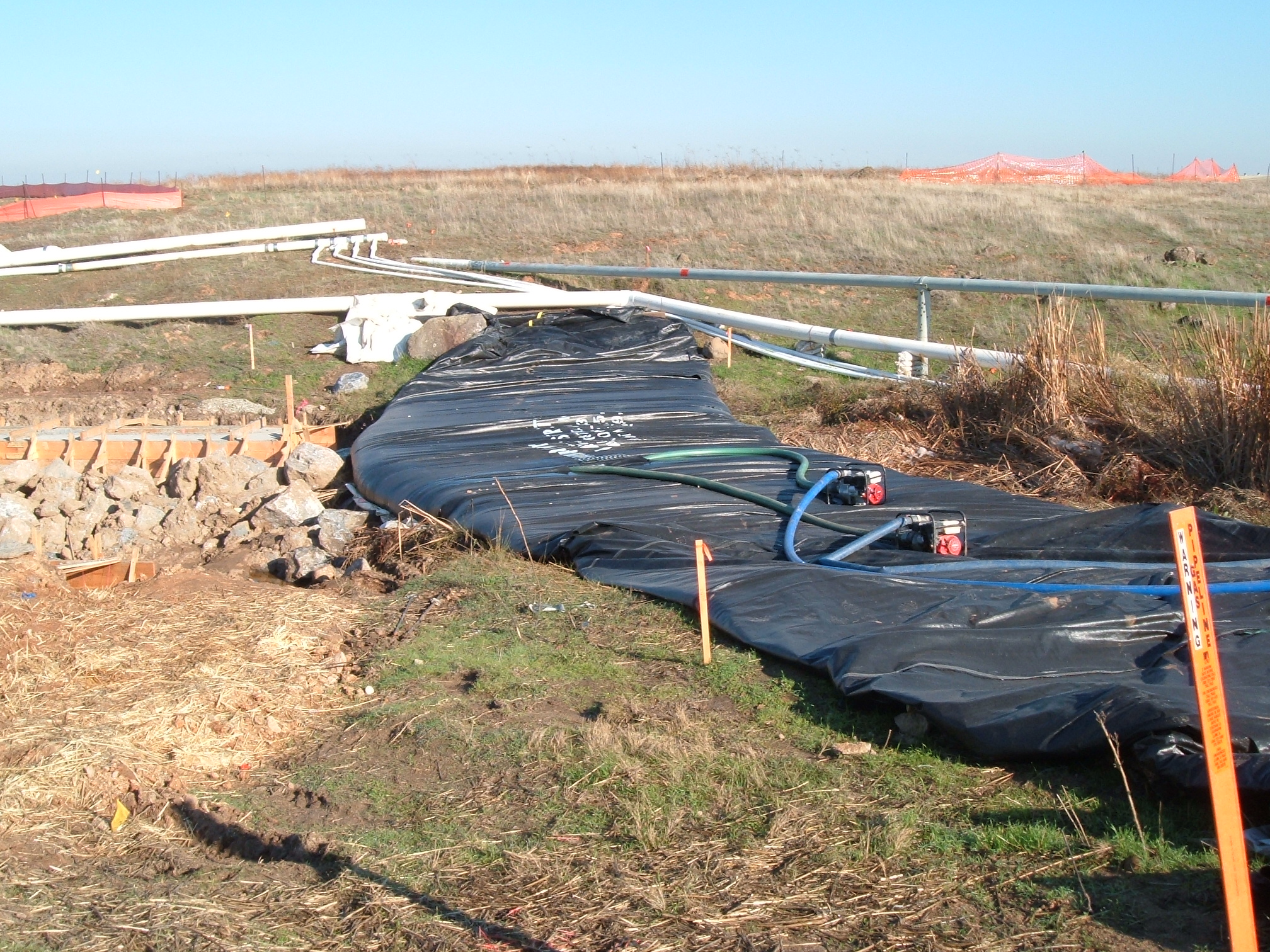
7.) As the water is pumped out of the AquaDam, the body of the dam becomes flaccid, and the water inside wants to roll downhill.
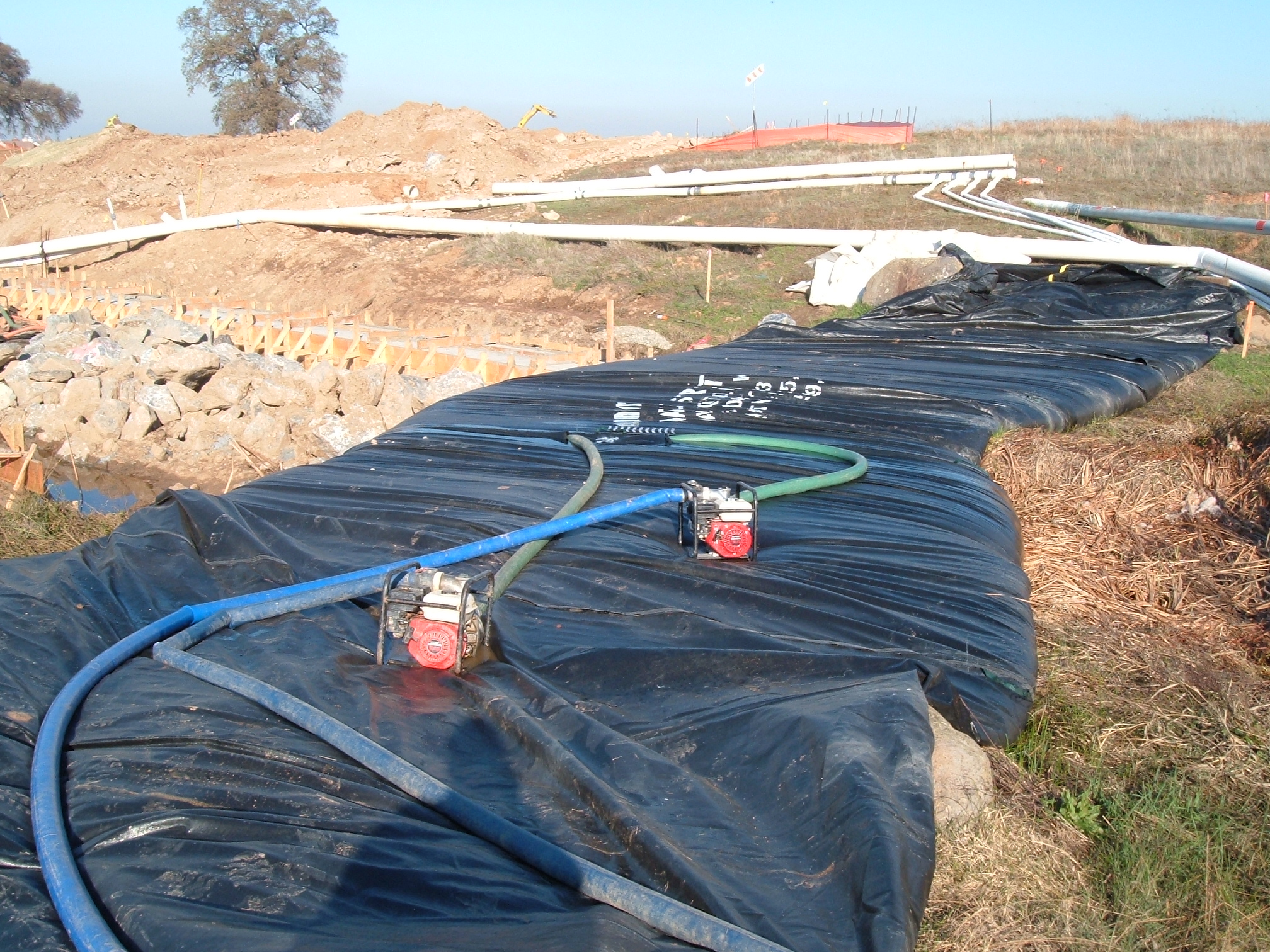
8.) As the water is pumped out, the AquaDam will get wider and the material looser. AquaDams are made of light weight flexible materials and will float when empty in deep enough water.
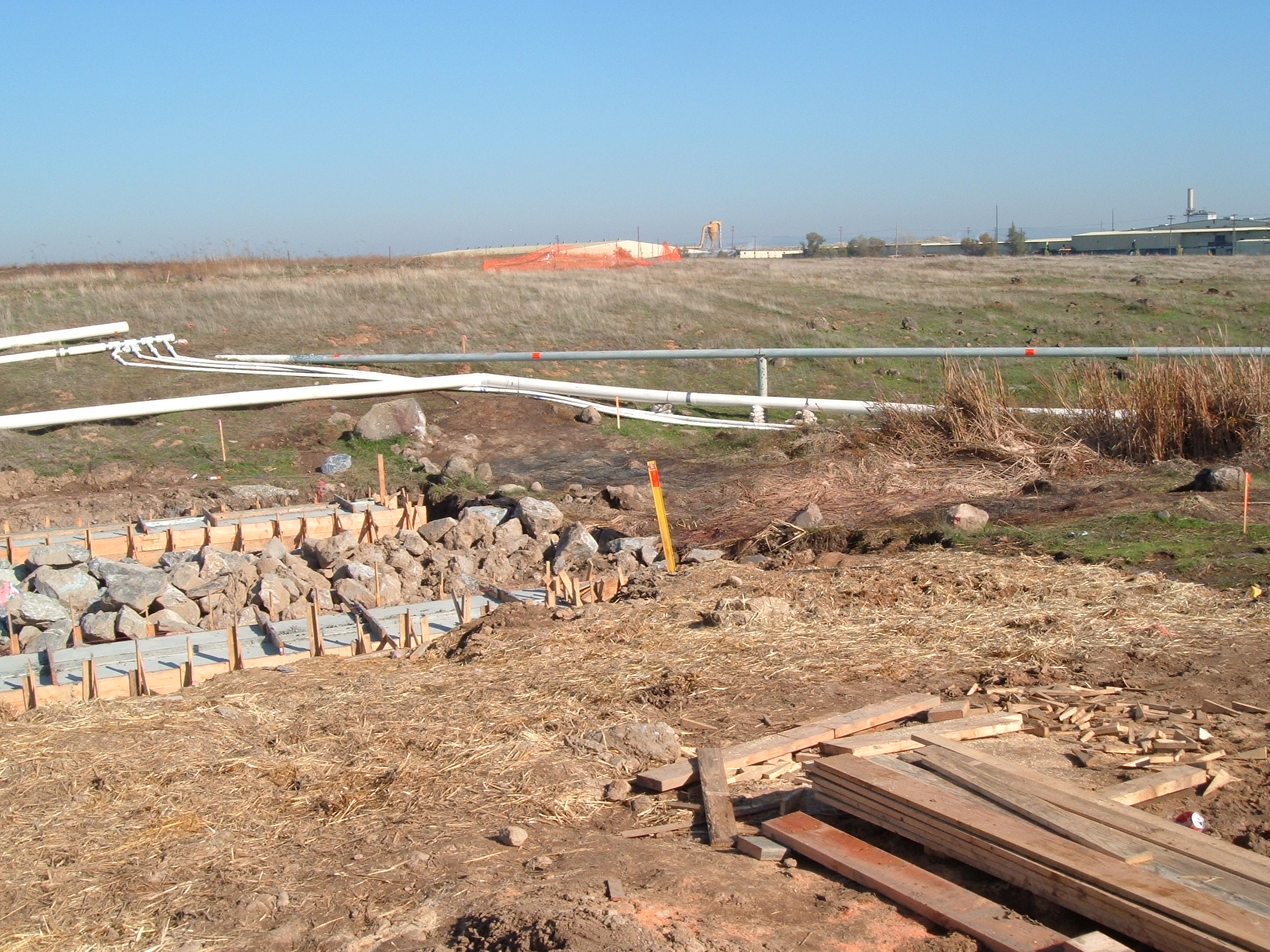
9.) The AquaDam has been removed and left the area as it was prior to installation. Great job AquaDam.
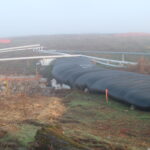
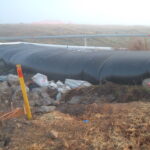
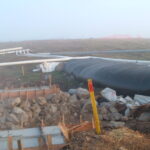
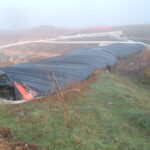
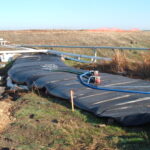
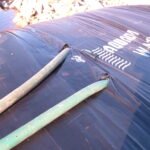
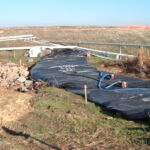
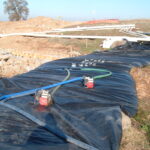

De-watering, Double Open End (DOE) AquaDam, Markham Ravine, Joiner Parkway Bridge Construction, Line Configuration
